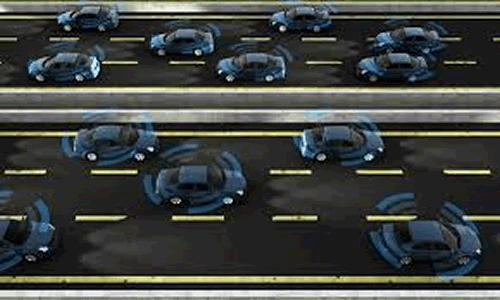Transportation Prepares for Transformation
The automotive world is continually increasing its data handling requirements, adding more electric vehicles to the fleet, and moving towards the impending reality of driverless cars. Connector Supplier discusses these trends and more with two experts from TTI‘s transportation business unit: Lee Iken, director, and Quang Luong, director of sales engineering.

Transportation Prepares for Transformation
Connector Supplier: What vehicle systems do you predict will see increased connector demand by connector type? What is driving that demand?

Quang Luong
Quang Luong: A long time ago, you heard all about the connected vehicle, and we’re finally starting to see it. With the new requirement for rear cameras, you’re seeing a lot of data buses that need to handle higher data rates at higher speeds because they’re handling video. We see a lot more safety systems too. Besides just back-up cameras, they’re incorporating LIDAR (light detecting and ranging, a remote sensing method that uses light in the form of a pulsed laser to measure ranges of variable distances to the Earth) in some vehicles, which is fairly expensive, but is coming down in price. Real-world LIDAR applications are coming soon in high-volume vehicles.
CS: What requirements will make driverless cars a reality?
QL: Driverless cars are coming really soon, and vehicle electrification is helping to drive that. It’s a lot easier to make a driverless electric vehicle (EV) than it is to make an internal combustion engine driverless, because you already have a lot of electronics in an EV. So it’s easier to control due to all of the electronic controllers that are already present in the vehicle. With LIDAR and cameras coming down in price, along with all of the other systems that are already present in EVs, such as battery management software, which is already written by EV OEMs, it’s easier for EV OEMs to incorporate autonomous driving into their vehicles.
California’s Department of Motor Vehicles website lists all the companies that are authorized to test driverless vehicles in the state, and it’s a pretty big list.

Lee Iken
Lee Iken (LI): We also see self-driving trucks for simple routes. What’s driving it, obviously, is cost. If you’re a driver in a driverless truck, you might only be getting 30 cents per mile, as opposed to a driver in a regular truck who might get 90 cents per mile. Trucking companies are finding new profits through a combination of driverless trucks, which allow them to pay drivers 30 to 40% less, and connected trucks, which optimize route plans to save money on fuel.
QL: Fleets want information, from knowing where the truck is to driver efficiencies and other metrics that allow companies to rate, rank, and incentivize drivers. Fleets are doing a lot of data mining to try to cut costs, and to give drivers incentives to cut costs.
CS: With so many control units within a single car, how will Ethernet address them all? How will all the interconnections be consolidated?
QL: A lot of connector companies have a high-speed interface that they can use for electronics, and they’re trying to get theirs to be standard along with a lot of the industry-standard ones that are out there. USCAR has a standard for a USB Mini-B interface that contains a locking latch and, for other USB connectors, like USB Type A, many OEMs have their own versions with lock latches. Those interfaces are not specified by USCAR, but each supplier is trying to get its version to become the industry standard.
CS: Describe some of the issues with signal integrity in automotive electronics and how connector technology must handle electromagnetic interference (EMI)/noise?
QL: A lot of the electronics are shielded, so you don’t necessarily have to worry too much about special cabling or whether the cable has to be a twisted pair. A lot of electronics are pretty hardened against that. One area where I do see a lot of concern about EMI is in high-voltage connectors used in hybrids and pure battery EVs. Since you’re switching at such high rates, and at high voltage, you have a lot more EMI. So, there’s a lot of shielding to prevent noise from getting out and affecting the other electronics, especially high-voltage products. Those connectors are shielded, and you have to actually worry about quite a bit of current on the grounding portion of it. Some of our customers that use fairly high current — 300A at about 800–1,000V in high-current, high-voltage products — are seeing around 20A of current on the grounding, shielding portion of it. Therefore, you do have to worry about quite a bit of EMI, not just milliamps of current on the ground shield. Just for reference, most cars are operating at 350–400V and at 200–250A, so we’re talking about 300–400A at 800V or 1,000V in EV trucks and buses.
CS: What is the connector industry doing to advance the electric charging infrastructure?
QL: They’re building connectors that can handle more power, more current, and more voltage in smaller packaging. When you’re talking about electrification, I’d like to say that we’re seeing real fast charging — not just what’s out there — which is around 50kW; 400kW fast charging is on the horizon, and it will need to have liquid-cooled cables for the coupler. How will the electric grid handle fast charging?
LI: We see a tremendous lack of infrastructure around the country. So, while the cars are starting to take off — the Tesla, the Chevy Bolt, and others — the one charger in the mall parking lot just isn’t enough anymore. The two Tesla chargers in a city aren’t enough anymore. We see a tremendous opportunity on the infrastructure side for EV components.
CS: How is connector testing for cars and trucks changing due to all the integrated electronics and data handling?
QL: Everyone’s trying to follow USCAR and creating their own that’s a little different, but usually using USCAR as a guideline. Also, the truck industry has its own test standards. I see OEMs requiring a harsher version of that test. They are going to a higher vibration — not just regarding g-force, but changing the vibration profile to make it a harsher test. The harsher testing in vibration and temperature is due to connectors’ need to survive in the engine compartment, as well as new EPA regulations. Some of these regulations also require emissions data, and any disruption of data requires a fault. In a truck, connectors that fail and have intermittencies in critical emissions areas produce fault codes, which cause the vehicle to go into limp-home mode or even disable it until the fault is fixed. Prior to these monitoring requirements, many of the connector intermittencies would not have been noticed.
LI: The trucking industry is testing aluminum wire to get away from copper.
QL: That’s more of a cost and weight savings with aluminum cable. There are not a lot of takers. The truck companies want car companies to do it first. There’s a lot of interest in it for weight savings on the truck side. However, aluminum takes more processing. And, whoever services it has to know it’s aluminum because mixing products like terminals that were intended for copper on aluminum can cause a thermal incident. Then, sealing it also becomes a worry. If the aluminum gets exposed to air, it can degrade. For smaller gauge sizes, this generally means using a conformal coating. For larger cables, such as battery cables, heat-shrink tubing is required. Also, terminals must be designed to cut into the aluminum during the crimping process.
LI: Quang, is there any evolution of the distribution boxes in the trucks?
QL: Instead of doing hard wiring in electrical centers, trucks now have bused electrical centers and smart-bused electrical centers. You have electronics, and sometimes they integrate solid-state fuses and relays, but you don’t necessarily have physical, replaceable fuses and relays anymore. Software too. A lot of it is done through a data bus, whether it’s controller area network (CAN) or local interconnect network (LIN). The CAN version for trucks is SAE J1939. Many new truck designs now integrate J1939 directly into a smart electrical center.
CS: Thank you for your insights, Lee and Quang.
Recently posted:
[related_posts limit=”10″]
- State of the Industry: 2022-2023 Connector Sales - April 16, 2024
- Amphenol is On a Roll - April 2, 2024
- Nicomatic Proves That Two Heads are Better Than One - March 26, 2024






